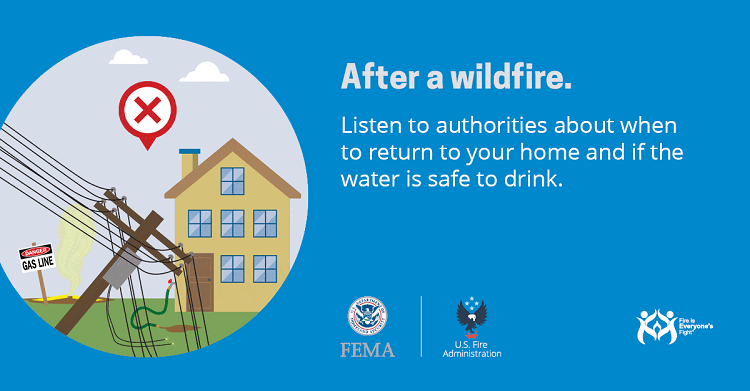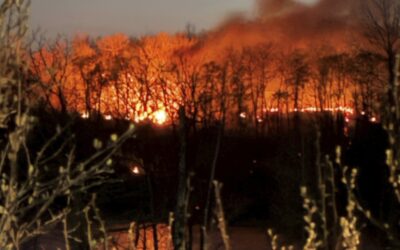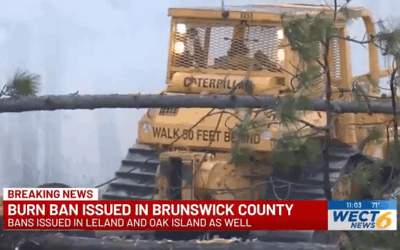Considerations and suggested resources to help communities rebuild and individuals to recover after a wildfire

(USFA)
United States Fire Administration
A traumatic event like a wildfire can have devastating effects on the community. Pre-fire planning — including home hardening and landscape maintenance at the home and in the community — can help reduce the risk of loss from wildfire and help neighborhoods and cities be more resilient after a wildfire.
Communities that complete pre-fire planning usually recover more quickly because they have developed support networks.
The recovery process may take many years. All large-scale wildfires are followed by post-fire flooding that threatens infrastructure, water supplies, homes and businesses. Even residents whose homes survived the wildfire may not be able to safely return for some time or may need to evacuate frequently for several years after the fire.
Helping people recover financially and emotionally
Recovering communities need resources to help them rebuild financially and emotionally. Consider the following steps:
Identify people who may need additional assistance.
Ensure there are adequate housing options. Some residents may have medical needs, pets and livestock, or English may not be their first language. They may also need financial assistance or social services.
Clean up burned properties.
Debris may contain hazardous materials such as asbestos or lead in the ash and remains of burned structures. Local health departments can be a key partner.
Develop a recovery plan for post-fire flooding concerns.
It should identify risks and prioritize mitigation projects to reduce life-safety threats and further damage. Remember to establish rain thresholds for road closures and evacuations. The National Weather Service may be able to assist you.
Address landscape restoration needs in order to prevent further harm to the watershed.
These projects can reduce flooding as well as help to protect water quality.
Repair and maintain infrastructure.
The more quickly damaged infrastructure is repaired, the more quickly life can get back to normal for community members. Remember to inspect other infrastructure that may be subject to flooding like culverts, dams and ponds. They may need to be repaired to reduce the likelihood that they will fail in a flash flood.
Resources to help with the community rebuilding process
- The U.S. Fire Administration’s Reimbursement for Firefighting on Federal Property can provide reimbursements for costs if you responded to a fire on federal property.
- The Action, Implementation and Mitigation program can provide technical assistance, mentoring and some funding opportunities for mitigation efforts to be implemented post fire or as the community is rebuilding for the future.
- After the Flames provides resource information on post-fire recovery and provides informational webinars and conferences.
- The Federal Emergency Management Agency’s (FEMA’s) Hazard Mitigation Grant Program (HMPG) Post Fire provides funding to implement hazard mitigation measures after major wildfire events following a Fire Management Assistance Grant (FMAG) declaration. FEMA’s HMGP Post Fire assists with long-term hazard mitigation planning and projects following an FMAG or presidential major disaster declaration.
- FEMA’s Building Resilient Infrastructure and Communities program provides annual support for states, local communities, tribes and territories as they undertake hazard mitigation projects to reduce their risks to natural hazards.
- The Natural Resource Conservation Service assists with site-specific post-fire efforts through their Emergency Watershed Protection program. The program includes technical and financial support to local governments to implement projects.
- The U.S. Army Corps Of Engineers (USACE) provides a wide range of technical assistance to communities, including modeling and forecasting. Through Silver Jackets, USACE helps communities explore the availability of mitigation grants and determine ways to use them creatively.
Prepare for individual recovery
Individual recovery is easier if community residents prepare. Encourage them to think about the following:
- Work with your insurance company to ensure you have an accurate inventory of your home. Consider taking pictures of your home and its contents. Save this information in a safe place. Make sure you have enough insurance to help you rebuild.
- Develop a personal support network. Identify relatives or friends out of the area who you can stay with temporarily.
- Get involved with local recovery efforts and resources.
The recovery process can be easier and communities can be more resilient with preparation before, during and after a wildfire.




